Safety car
From the ESPNF1, Steven Lynch blog:
I remember Howden Ganley being told he'd won a Grand Prix - and then everyone looking pretty stupid when it turned out he hadn't. When was this? asked Mark O'Connell from New Zealand
The New Zealander Howden Ganley had his 15 minutes of fame at the Canadian GP in 1973. The race, at Mosport Park near Toronto, was dogged by rain, and actually was the first world championship race in which a pace car was used, after a collision between Francois Cevert and Jody Scheckter partially blocked the track. There was much confusion about the placings, because cars had been diving in and out of the pits to change tyres as the rain came and went. The safety car was supposed to pick up the leader and, to general surprise, took station just ahead of Ganley, who had started near the back of the grid in his Frank Williams-entered Iso-Marlboro. But Ganley wasn't actually in the lead, and the mistake allowed the drivers who were really in front of him in the race to make up almost a lap on the rest of the field as they joined the "snake" behind the safety car. When the safety car pulled in, Ganley drove well to keep the "chasers" at bay for a while, but then a battle developed between Emerson Fittipaldi and Jackie Oliver, and at the end of the race the Lotus pit celebrated when Fittipaldi crossed the line first. But the chequered flag stayed down, until a group led by Ganley swept by. About three hours later it was agreed that the man in first place had been in the group led by Ganley - but it wasn't him, as he turned out to be a lap behind too. No, the winner was actually Peter Revson, the American in a McLaren, with Fittipaldi second: poor old Ganley ended up sixth. That, mind you, was the one of the best results of his F1 career.
1973 The pace car was used for first time during the Canadian Grand Prix.
1992 The first appearance of the safety car at the British Grand Prix.
In car racing, a safety car is a car which is used to limit speed on a racetrack for safety reasons. Safety cars may be used to keep speed safe in inclement weather while allowing the race to continue, and they are also used to regulate speed in the event of accidents and other incidents on the track. The use of a safety car can be controversial, as it can interfere with the strategy of drivers and racing teams, and some people view safety cars as interference.
As a general rule, the presence of a safety car is indicated with a yellow flag and "SC" board displayed, to alert drivers to the fact that a safety car is on the track and the drivers are in a "caution period," meaning that they need to slow down for safety reasons. Dashboard lights, or in Formula 1 case steering wheel marshaling lights, may also be activated to warn drivers about the safety car. In same racing categories, safety car's driver may indicate that passing is acceptable, usually by flashing a green light.
Mostly in US racing, Safety cars are also known as "pacing cars," because they set a pace for the drivers in the race. A pacing car needs to be driven at a speed which permits optimal performance for the cars on the track, while also reducing the risk of a dangerous incident. Safety car drivers are usually race car drivers, as they have experience with track conditions and they know which speeds are safe. They are typically high-performance cars which have been fitted with special light racks and bold markings to make them highly visible.
Various bodies in international car racing have differing rules about safety cars. For example, in some racing series, making a pit stop is banned during the beginning of the caution period, while in other cases it is permitted. Violating the rules for the caution period can result in penalties or disqualification, so drivers are careful to stay abreast of current rules in the event that a safety car is deployed during a race. In Formula One during 2008 season a pit stop was banned during the beginning of the caution period, but most of the teams strongly oppose to this rule and waned to be changed. For 2009 this rule was changed. It has been agreed in Formula 1 category to minimally revert to the old system, so, the pitlane will stay open for pit-stops immediately after the deployment of the safety car.
It is expected that, to accompany the revised system for 2009, drivers will need to adhere to a minimum lap time as they drive slowly after deployment of the SC, as has been trialed several times in free practice during year 2008.
It was also agreed that such a rule change could only be implemented if there was an effective way of preventing drivers rushing back to the pits - which could potentially result in them driving at high speed through an accident zone. Tests took place at several races during season 2008. of standard ECU software revisions, which informed drivers during a safety car period of a maximum speed at which they could return to the pits. Drivers will be alerted about the deployment of the Mercedes safety car by the illumination of a yellow cockpit light, and have just five seconds to acknowledge the alarm by pressing an acknowledge button.
The "minimum time system" is possible due to the standard ECU, and GPS positioning.
The new rules are an improvement but not perfect. If at the time of race neutralization driver just past the pits, it will be a problem because he will have to do a full lap. But at least the new rule prevents you losing places or time against your immediate opponents.
Rules about safety car are changed during the later years, and FIA together with FOTA are trying all the time to improve it.
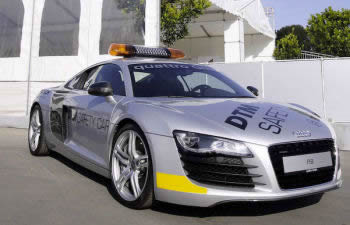 |
Audi R8, new Safey Car for 2009 DTM racing category |
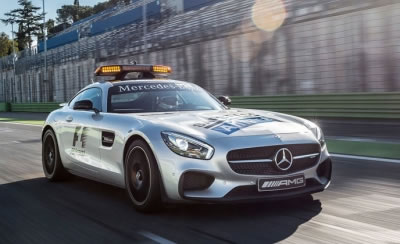 |
1996: C 36 AMG |
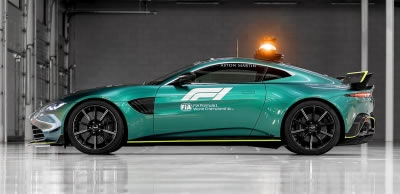 |
2021 Aston Martin – which returns as a manufacturer F1 entrant for the first time in over 60 years |
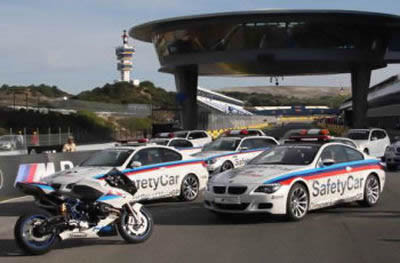 |
For MotoGP racing in year 2008, BMW M3 is Safety Car |
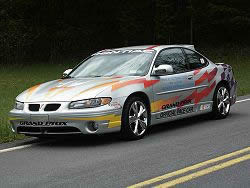 |
Pontiac Grand Prix GTP coupe is Winston cup Safety car |
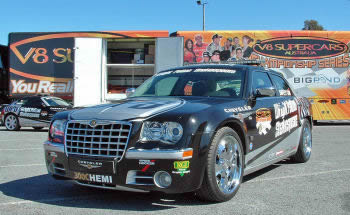 |
Chrysler is Australian V8 series Safety Car |
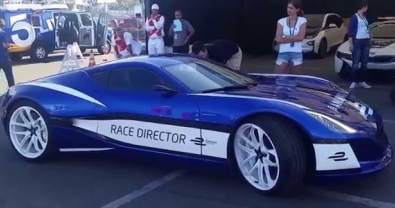 |
"Rimac Automobili", known simply as "Rimac" announced that it is to supply the new all - electric FIA Formula E Championship with one of its exclusive Concept_One supercars. The fully - electric one - of - a - kind car , which can accelerate from 0 - 60mph in the same time as a Formula E single - seater , will be supplied for use by the championship's Race Director during all race events during seson 2014 - 2015 |






